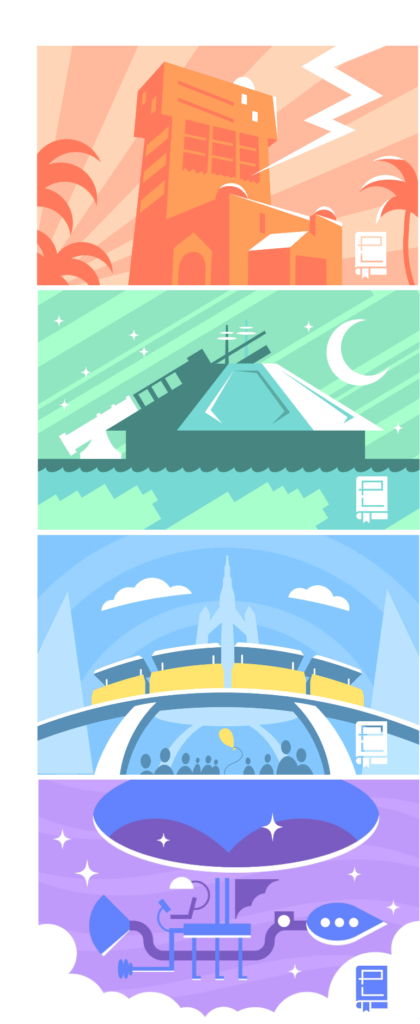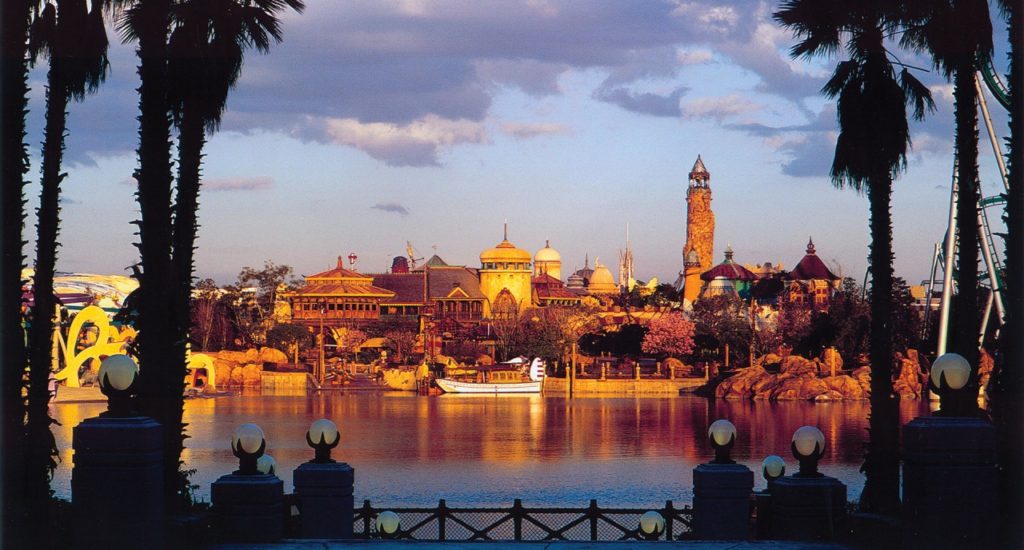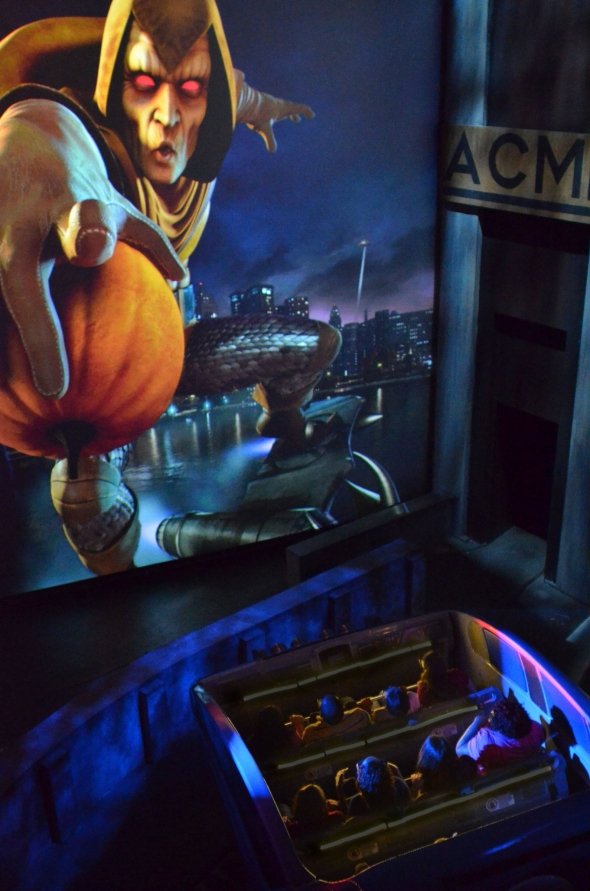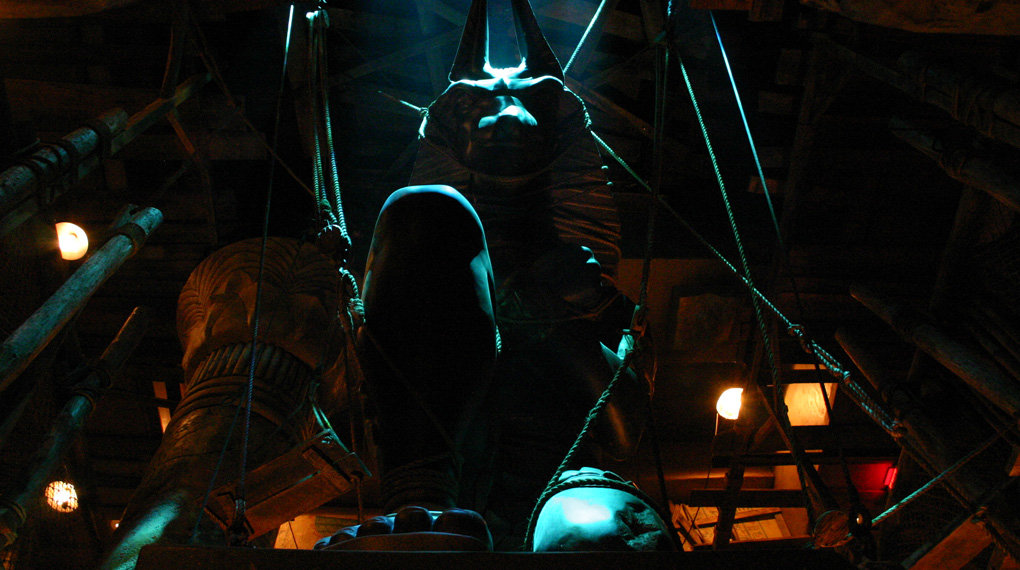Here at Park Lore, we’re always looking to see the parks we love in new ways. Now, listen, comparing parks? It’s no easy business. There’s no end to the “Disneyland vs. Disney World” debate, or the “Disney vs. Universal” debate. Instead, we’re big proponents that parks should learn from each other’s successes! That was the reason for our look at 16 Disneyland Exclusives that Should Make Disney World Fans Jealous, and the opposite – 16 Disney World Exclusives That Should Make Disneyland Fans Jealous.
Most theme park fans probably agree that at the end of the day, Disney Parks are special places; pretty agreeably, “the best of the best.” But if you think you’ve got nothing to learn, you won’t learn anything. So today, we want to honestly and sincerely look at 12 Universal Orlando Exclusives That Should Make Disney Parks Fans Jealous. These 12 rides, attractions, experiences, decisions, and differences that make Universal Orlando an incredible, astounding, and amazing destination that even Disney could learn a thing or two from…

Do you love armchair Imagineering, in-depth storytelling, and seeing the theme parks we love differently? Park Lore is an ad-free, quality-over-quantity, one-person project centered on building a world-class collection of the interconnected stories of theme park attractions, design projects, and industry explorations.
This feature is one that’s usually locked in our Member Vault, where Park Lore patrons can find hand-drawn art, armchair Imagineering walkthroughs, and other in-depth Special Features, as well as quick-read, just-for-fun Extra Features. Thanks to supporting Members, this feature is temporarily unlocked as a preview!
But if you value my mission to provide clickbait-free, ad-free deep dives and new ways to see the parks, consider becoming a supporting Member of Park Lore for as little as $2 / month. That support is what keeps this unique themed entertainment storytelling project open, ad-free, and available to all. Thank you!
1. Islands of Adventure

Even the hardest-headed of Disney Parks loyalists must have trouble writing off Universal’s Islands of Adventure. Opened in 1999 (and thus, transforming the single-park Universal Studios Florida into a multi-park resort), Islands of Adventure was often billed as “the world’s most technologically advanced theme park.” But cleverly, its cutting-edge ride technologies, big-bang thrills, and first-of-their-kind show elements are largely disguised by a park that’s often described as Universal’s first attempt to be “more Disney.”
It’s true that Islands of Adventure is comprised of the kind of built-out, “immersive,” “fantasy” lands filled with hidden gems and secret spots like you’d expect of Disney’s best without a hint of the neighboring Universal Studios’ backlot / movie set / soundstage aesthetic… But arguably, even Disney hasn’t produced something that’s as bold a reinvention as Islands of Adventure since EPCOT.

For one, we studied the park’s unique layout in our renowned Park Paths Special Feature, exploring how Islands of Adventure’s “wheel” format lends itself to the park’s narrative – bridges that act as “flash cuts,” snapping guests between amazing worlds. (It’s easy to see how the model is adaptable, too. Would you really have been surprised if Disneyland’s third gate or Disney World’s fifth used the “Islands” model with immersive lands dedicated to Star Wars, Avatar, Monsters Inc., Frozen, Moana, The Avengers, and Indiana Jones built around a lagoon?)
Even more revolutionary, Islands of Adventure wasn’t just the birthplace of the “IP land” (with park areas wholely dedicated to single intellectual properties); it was brave enough to avoid dedicating those lands to blockbuster films. Largely eschewing movies entirely, each of the park’s “islands” instead brings to life something far, far more powerful: stories. The picture books of Dr. Seuss; Jay Ward’s Sunday funnies; comic book superheroes; timeless myths and legends; even Jurassic Park and Hogsmeade bring to life far-flung, impossible places that originated in novels!
That makes Islands of Adventure more of a library than a video store; a place built to honor the timeless, shared, intergenerational characters and stories that shape us over lifetimes, not the films that thrill us for a year or two before something newer and hotter comes along.

(You can see that distinction in action in Universal’s newer builds. Both parks in Singapore and Beijing are built in the style of “Islands,” but their substance is closer to the “Studios” model – lands dedicated to Despicable Me, Transformers, Shrek, Madagascar, Jurassic World, Kung Fu Panda, and other more recent blockbuster hits that surely look great now, but might not feel as relevant in 10, 20, much less 50 years.)
That explains Islands of Adventure’s surprisingly high ride retention rate, and why we’re particularly hesitant when fans suggest replacing, say, Toon Lagoon with Minions Land, or axing Jurassic Park entirely for Jurassic World. It just sort of misses the point of the park, which we sure hope Universal Creative understands. Basically, a theme park that’s not focused on movies, but dedicated to intergenerational, timeless stories? In this economy?! Universal’s Islands of Adventure is an unlikely, literary park that should be celebrated, admired, and – above all – protected at all costs by both Universal and Disney theme park fans.
2. The Amazing Adventures of Spider-Man

We couldn’t get far on a list of Universal’s must-try offerings without mentioning the ride that remains the envy of Disney Parks fans across the globe – the Modern Marvel: The Amazing Adventures of Spider-Man. Made possible by Universal’s ironclad, exclusive licensing of Marvel’s comic book heroes (long before Disney owned Marvel, before the “MCU” dominated the box office, and even before 2002’s Spider-Man film starring Tobey Maguire), the ride feels like “the one that got away” for Disney fans. And for good reason.

The Amazing Adventures of Spider-Man sets guests down in the steaming, oversaturated, comic book streets of New York, where Doc Ock and the villainous Sinister Syndicate have used an Anti-Gravity Cannon to steal the Statue of Liberty. With his reporters throwing in the towel, the Daily Bugle’s Editor-in-Chief J. Jonah Jameson recruits hapless tourists (that’s us) to take to the streets in a prototype off-roading, news-gathering vehicle (the “SCOOP”) and capture the headlines.
When The Amazing Adventures of Spider-Man opened in 1999, it was a groundbreaking, jaw-dropping, revolutionary attraction the likes of which had never been seen before. Composed of a roving, rotating, motion-simulating ride vehicle passing through physical sets perfectly blended with 3D screen-based animation, the ride was a gigantic leap into the 21st century. (Its fusion of sets, motion, and media has informed just about every modern Disney and Universal E-Ticket ride to follow… arguably, even a few too many modern rides amount to Spider-Man spin-offs.)
But even twenty years later, The Amazing Adventures of Spider-Man feels like the magnum opus of Universal’s ride collection; certainly, still among the pantheon of the best rides on the planet. It’s action-packed, explosive, in-your-face, oversaturated, surprising, thrilling, and – most importantly – really, really fun. More to the point, it’s a picture-perfect encapsulation of the joy and vibrancy and color superheroes are supposed to be about; a mark that Disney’s own, very different Spider-Man ride arguably doesn’t quite hit.
3. Universal Express

Universal Express probably seems like an odd entry on this list, because it’s definitely not an attraction or experience, and – to be honest – Universal’s paid-for line-skipping system has long been held up by Disney Parks fans as evidence of just how much more guest service-focused Disney’s theme parks are. After all, while Universal charged premium prices for priority access to rides, Disney didn’t.
Now obviously, we could argue that Universal Express and Disney’s FastPass were apples and oranges anyway – with wildly different operations, values, and target markets – and comparing them as services wasn’t really a helpful metric for vacationers. But given that the pandemic gave Disney the excuse it needed to “retire” complimentary FastPass and relaunch it as a thinly-veiled, revenue-generating “new” add-on service called Disney Genie+, comparing the two got a whole lot easier.

Yes, the price of a single day of Universal Express is regularly ten times the price of a single day of Disney Genie+ access… but of course, the value of Express is proportionally about as much higher, too, and the prohibitive cost means “Standby” lines keep moving. We dedicated an entire Extra Feature to exploring how Disney Genie+ and Universal Express work, what they cost, how they differ, and whether they’re “worth” their respective prices. While the two systems definitely remain pretty incomparable on a point-by-point basis, it’s interesting to position Disney’s high-tech, low-cost, app-based, mid-utility, paid-for system against Universal’s low-tech, high-cost, phone-free, VIP, all-inclusive one.
Whether or not you think Universal Express is “worth” its premium cost, one thing most folks can agree on is that having Express assures you a pretty stress-free day. No phones. No apps. No return times. That’s a very, very different experience than Disney’s line-skipping service offers – and one that many Disney Parks fans would at least like the option of having.
Also adding to the envy of Express is that the top-tier, Unlimited version of the service – a starting value of $110 per person per day – is included with any stay at Universal’s highest-priced “Premier” hotels. That’s an almost outrageously luxurious “giveaway,” especially considering that Disney’s equivalent tier – “Deluxe” hotels – regularly cost twice as much per night, and don’t even include the $15-a-day Genie+!
4. Revenge of the Mummy

The Modern Marvel: Revenge of the Mummy is, in many ways, a time capsule for Universal. Opened in 2004, the ride represents the company’s New Millennium commitment to keeping their “Studio” park up-to-date with hot films even at the expense of classics… but it also came before Universal’s infamous overreliance on screens. It’s tactile; physical; real.
On board, guests journey deep into the tomb of Imhotep (except it’s actually a movie set? Or something? Okay, it’s complicated) only to be terrorized by mummies, flames, scarabs, and more. The ride includes animatronics, on-board audio, dead ends, turntables, backwards motion, unexpected stops, fire effects, a twisting roller coaster section, and an uphill launch into the open mouth of the Mummy himself.

Sure, nearly twenty years later, it seems a little silly that the ride was billed as “the world’s first psychological thrill ride.” (At least on paper, it’s a fun, family roller coaster mixed with an impressive dark ride and some really great surprises; as much Universal’s answer to Indiana Jones Adventure as The Mummy itself was to Indiana Jones.)
While the Amazing Adventures of Spider-Man could easily fit into Disney Parks with a few tweaks, Revenge of the Mummy… could not. “Imagineering aficionados” easily pick apart the ride’s somewhat nonsensical narrative, it’s fourth-wall-breaking moments, and its abstract middle act that would make the “Disco Yeti” want to breakdance. But at the end of the day, Revenge of the Mummy has pure “we-gotta-do-that-again” joy.


